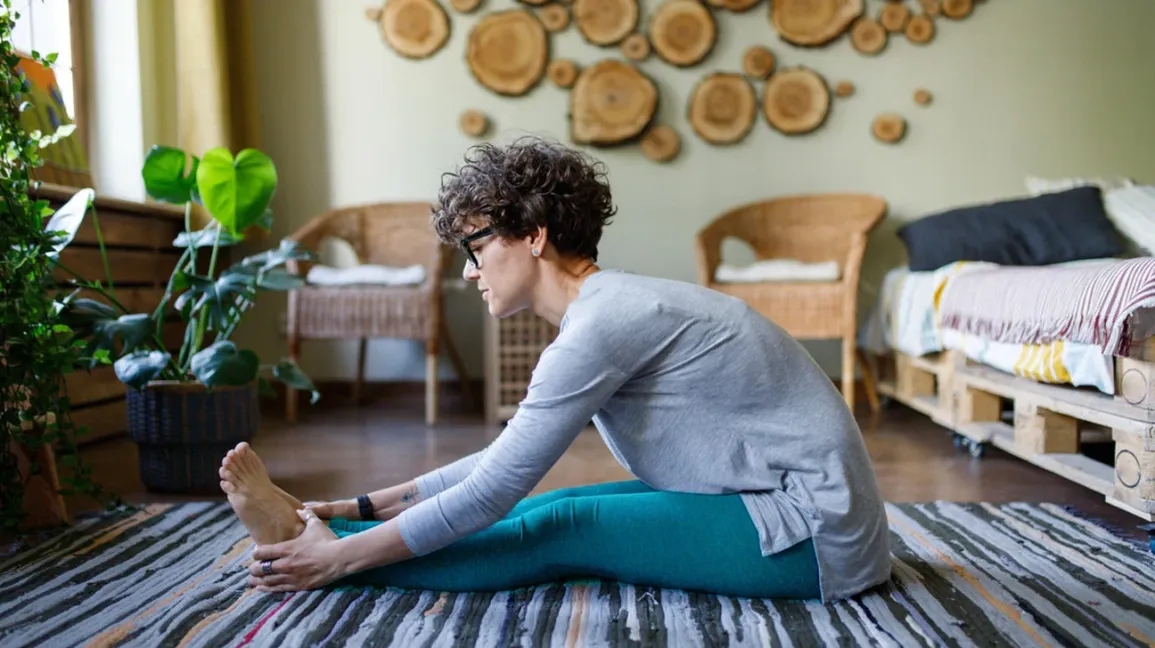In today’s fast-paced world, finding time to hit the gym can be challenging. Whether you’re juggling work, family, or other commitments, carving out time for fitness may seem impossible. The good news is that you don’t need a gym to stay in shape. With the right approach, you can get a fantastic workout right in the comfort of your own home.
Beginner At-Home Workouts
If you’re new to fitness or getting back into exercise after a break, starting with beginner-friendly workouts is key to building a solid foundation and preventing injury. The goal here is to focus on form, flexibility, and gradually increasing your stamina.
The Best At-Home Workouts for Every Fitness Level

1. Bodyweight Circuit
This simple bodyweight workout targets multiple muscle groups and requires no equipment. Perform each exercise for 30 seconds with 15 seconds of rest in between. Repeat the circuit 2-3 times.
- Squats: Stand with feet hip-width apart, lower your body as if sitting back into a chair, then return to standing.
- Push-ups: Start on your knees or toes, lowering your chest to the floor, then push back up.
- Glute Bridges: Lie on your back with knees bent, lift your hips toward the ceiling, and squeeze your glutes at the top.
- Mountain Climbers: Start in a plank position and alternate bringing your knees toward your chest.
- Plank: Hold a forearm or straight-arm plank for 30 seconds, keeping your body in a straight line.
2. Yoga for Beginners
Yoga is an excellent way to build strength, flexibility, and mindfulness, making it perfect for beginners. A basic yoga flow might include poses like:
- Mountain Pose: Stand tall with arms at your sides, grounding your feet and aligning your spine.
- Downward Dog: Start on your hands and knees, lift your hips toward the ceiling, and form an inverted “V” shape with your body.
- Warrior I: Step one foot forward, bend the knee, and lift your arms overhead, engaging your core.
- Child’s Pose: Sit back on your heels, stretch your arms forward, and rest your forehead on the floor for relaxation.
3. Low-Impact Cardio
If you’re looking for a gentle way to get your heart rate up, low-impact cardio exercises are ideal. Try 20-30 minutes of these beginner-friendly moves:
- Marching in Place
- Step Touch: Step side to side while lightly tapping your opposite foot.
- Knee Lifts: Raise one knee at a time, bringing it up to hip height.
- Arm Circles and Shoulder Rolls: Loosen up your upper body with controlled circular movements.
Intermediate At-Home Workouts
Once you’ve built a foundation, you can challenge yourself with more dynamic movements and increased intensity. Intermediate workouts are great for those looking to build strength, stamina, and overall fitness.
1. HIIT (High-Intensity Interval Training)
HIIT workouts involve short bursts of intense exercise followed by brief rest periods. This method is excellent for burning fat and improving cardiovascular health. Perform each exercise for 40 seconds, followed by 20 seconds of rest. Repeat the circuit 3-4 times.
- Jump Squats: Lower into a squat and explode upward into a jump, landing softly.
- Burpees: Start in a standing position, drop into a squat, kick your feet back into a plank, do a push-up, then jump back to standing.
- Lunges: Step forward into a lunge, then push back to the starting position.
- Plank to Push-Up: Start in a plank position on your forearms, push up to a high plank, then return to your forearms.
2. Strength Training with Resistance Bands
Resistance bands are an excellent addition to any intermediate workout. They’re versatile, portable, and add resistance without the need for weights. Try this full-body workout using a resistance band:
- Banded Squats: Place the band around your thighs and perform squats to increase resistance.
- Bicep Curls: Stand on the band with feet shoulder-width apart, hold the ends, and curl your arms toward your shoulders.
- Lateral Band Walks: With the band around your thighs, take small side steps to target your glutes.
- Tricep Extensions: Stand on the band with one foot, hold the other end behind your head, and extend your arm upward to work the triceps.
3. Pilates
Pilates is a low-impact exercise that focuses on core strength, flexibility, and muscle endurance. An intermediate Pilates routine might include:
- Hundreds: Lie on your back with your legs lifted at a 45-degree angle and pump your arms up and down while engaging your core.
- Leg Circles: Lie on your back with one leg extended upward, and make small circles with your leg to work your hips and core.
- Plank Leg Lifts: From a plank position, alternate lifting each leg toward the ceiling, engaging your glutes and core.
Advanced At-Home Workouts
For those who are more experienced, advanced workouts push your body to new limits, incorporating complex movements, higher intensity, and heavier resistance.
1. Advanced HIIT
Take your HIIT workouts to the next level with more challenging exercises and shorter rest periods. Perform each exercise for 50 seconds, followed by 10 seconds of rest. Repeat the circuit 4-5 times.
The Best At-Home Workouts for Every Fitness Level

- Tuck Jumps: Jump explosively, bringing your knees toward your chest mid-air, then land softly.
- Plyometric Push-Ups: Start in a push-up position and push up explosively so that your hands leave the ground.
- Single-Leg Deadlifts: Stand on one leg, hinge at the hips, and lower your torso toward the floor while extending the opposite leg behind you.
- Spider-Man Planks: In a plank position, bring one knee toward your elbow, alternating sides to engage your obliques.
2. Bodyweight Strength Training
For those without access to weights, bodyweight strength training can still provide a challenging workout. Try exercises like:
- Pistol Squats: Perform a single-leg squat, lowering your body as close to the floor as possible while keeping the other leg extended forward.
- Handstand Push-Ups: Practice against a wall for balance, lowering your head toward the ground and pushing back up to strengthen your shoulders and arms.
- Dragon Flags: Lie on your back and grip a sturdy object behind you, lift your entire body upward, keeping your legs straight, and slowly lower down with control to engage your core.
- L-Sit Hold: Sit on the floor with your legs extended, place your hands next to your hips, and lift your entire body off the ground, holding as long as possible to engage your core and upper body.
3. Kettlebell Workouts
Kettlebells are a fantastic tool for building strength and endurance. An advanced kettlebell routine might include:
- Kettlebell Swings: Drive your hips forward to swing the kettlebell to shoulder height, engaging your core and glutes.
- Turkish Get-Ups: Lie on the floor holding a kettlebell above you, and slowly rise to a standing position while keeping the kettlebell overhead.
- Kettlebell Snatch: Perform an explosive movement to bring the kettlebell from the floor to overhead in one fluid motion.
- Kettlebell Clean and Press: Lift the kettlebell to your shoulder, then press it overhead, engaging your entire body.
Conclusion
Whether you’re just starting your fitness journey or you’re an experienced athlete, there are at-home workouts that can help you reach your goals. The key is to choose exercises that match your fitness level and gradually increase the intensity as you progress. With consistency, dedication, and a mix of strength, cardio, and flexibility training, you can stay fit and healthy without ever leaving your home.


Comments